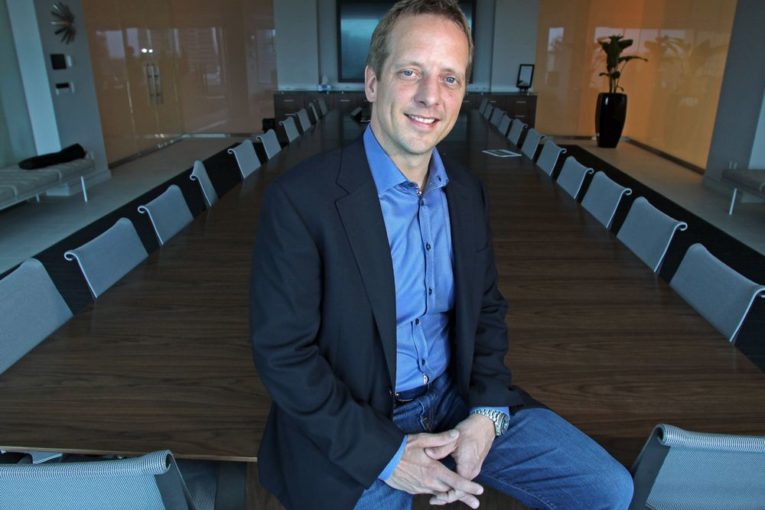
Canada’s oil-price discount is in retreat. Alberta’s plan to curtail crude production appears to be working.
Now, the province is seeking to uncover interest in building a new oil refinery in Alberta.
Well, that didn’t take long for our collective attention to turn elsewhere.
But before the Mission Accomplished banner is unfurled, here’s a reality check about Alberta’s oil crisis.
No long-term pipeline progress has been made in recent months.
Benchmark prices for West Texas Intermediate oil are hovering around US$52 a barrel.
And three Canadian companies that supported government-mandated production cuts have all released capital programs with less spending next year.
“Curtailment was trying to make the best of a bad situation,” said Kevin Birn, director of oilsands for consultancy IHS Energy.
“It is way too soon to say that everything is successful. The curtailment seems to have relieved the pressure on pricing and that’s unambiguously good for Canada, but the longer-term underlying issue — the need for additional take-away capacity — still exists.”
This week, Cenovus Energy Inc. and Athabasca Oil Corp. unveiled capital programs for 2019 featuring less spending.
Athabasca, a mid-sized producer, announced a preliminary 2019 capital plan totalling $95 million to $110 million, down from $190 million this year.
It is chopping 25 per cent of head office staff in Calgary immediately, about 30 positions, and company executives will take a 10 per cent salary cut next year.
“While we are encouraged by the recent short-term steps taken by the Alberta government, significant damage has already been done to both the Canadian economy and investor confidence,” Athabasca CEO Robert Broen said in a statement.
“The sector is still a long ways away from permanent solutions.”
Cenovus, one of the country’s largest oilsands producers, said Tuesday its total capital investment will land at between $1.2 billion and $1.4 billion next year, a modest four per cent reduction from 2018 levels.
Last week, Canadian Natural Resources set a base capital program of $3.7 billion for next year, down about $1 billion from a normal level, although it may increase spending by $700 million if conditions improve.
With the province cutting oil output in Alberta in January by 8.7 per cent, there’s simply little incentive to invest in more exploration and production capacity for next year.
“When you’re curtailing production, you don’t need to grow it. That’s why the solution is transportation, the solution is rail, it’s pipelines,” said analyst Samir Kayande with RS Energy Group.
It would be churlish, however, not to recognize some progress has been made.
The curtailment announcement has eaten into the oil-price discount, even before the first barrel is throttled back on Jan. 1.
The differential between Western Canadian Select heavy oil and WTI crude fell to just US$12 a barrel on Tuesday, according to Net Energy, a vast improvement from a discount that topped $40 last month.
Trican Well Service CEO Dale Dusterhoft said the Calgary-based firm recently cut its workforce by 160 positions heading into 2019, but anticipates staffing will remain stable through the first quarter of the year as it gets a read on the second half.
“We have seen a positive impact from curtailment for our clients,” he said in an e-mail.
“If the differential would have remained where it was before the government announcement, we would have anticipated significant cuts that would have had more of an impact on us.”
Premier Rachel Notley said Tuesday it’s encouraging to see fewer distressed barrels of oil being sold, although Alberta still needs to see brimming oil inventories drop once curtailment begins next year.
“The idea of reducing production … is not a long-term strategy,” she said.
Building more pipelines to get oil to market is the real solution, but that will take time.
Another longer-range remedy is to build up more upgrading and refining capacity in the province, allowing the province to boost the value of its raw resource.
But how will that happen?
Notley announced her government will accept expressions of interest until Feb. 8 from companies that want to build a new oil refinery in the province.
Alberta is willing to look at the business case of expanding existing refineries or constructing greenfield facilities, although it has not set a timeline for building such developments.
The premier wouldn’t say precisely what the province would do to incent such a major investment, but presumably loan guarantees or direct equity investments are on the table.
Given the massive challenges that have faced the province over its involvement with the new Sturgeon refinery northeast of Edmonton, taxpayers should be wary of the risks associated with such a plan.
This doesn’t mean the idea is a complete dud, but it all seems rather rushed.
And let’s face it, there’s a reason why private companies haven’t been clamouring to build new refineries on their own — it’s not economic, at least not without government help.
Last year, IHS Markit studied the refinery issue in Alberta and found a new development could work under the right circumstances, but it isn’t without a degree of risk.
“It depends on what kind of incentives they have on the table,” said Birn.
“Alberta produces more refined product than we now need domestically. So you are still going to need incremental pipeline capacity to deliver that volume to market.”
Yes, it all comes back to pipelines.
And Canada’s inability to get them built is what ignited this crisis in the first place.
Chris Varcoe is a Calgary Herald columnist.
You can read more of the news on source
